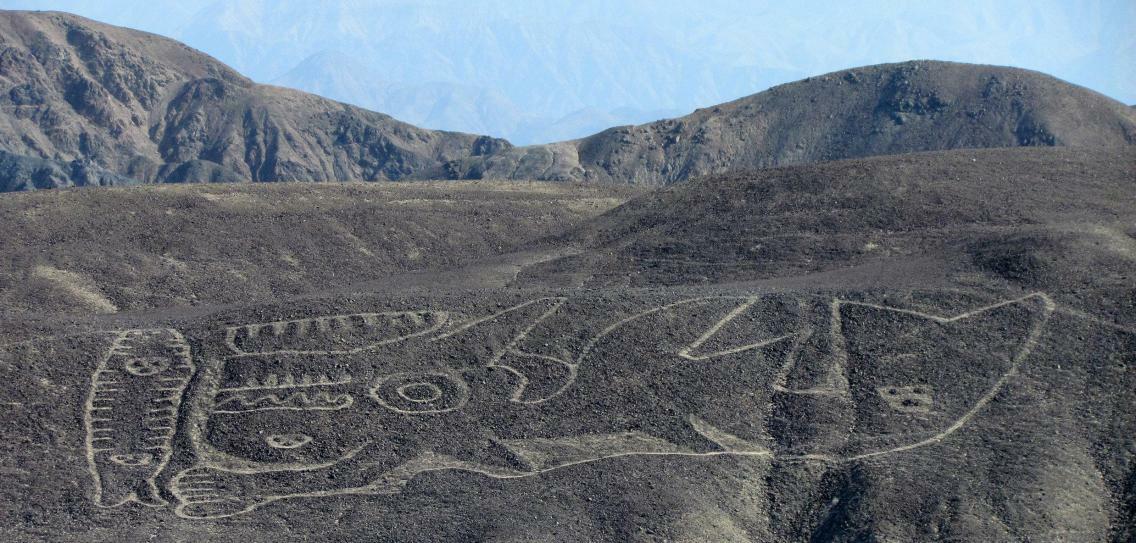Peru – in the local Quechua language “land of abundance” – is a country with a diverse nature, rich history and culture. What should you know before traveling to the homeland of the Incas?
Population and religion of Peru
The complex ethnic mosaic of modern Peru is rooted in its history. The Spanish conquerors at one time Europeanized the local culture, adding to it their own language and the Catholic religion. They also brought enslaved Africans, whose descendants now mostly live in Lima. After slavery was banned in 1854, the Chinese, Northern Europeans and Japanese came to the country to establish agriculture. Thanks to mixed marriages, several religious groups have formed in the country.
Peru provides for freedom of religion at the constitutional level. However, the majority of Peruvians are Catholics, the rest are evangelical Christians, Protestants and followers of traditional local beliefs.
Fun fact: During New Year's, Peruvians give each other yellow underpants, the color of which symbolizes prosperity.
Peruvian cuisine
In the national cuisine of Peru you can find fish and seafood dishes, such as ceviche, as well as pasta and buñuelo (Mexican flatbread).

In addition to the influence of other cultures, environmental conditions also contribute to Peruvian gastronomy. For example, pachamanca is a dish of meat marinated in herbs and spices and baked on hot stones.
Fun fact: A popular traditional drink in Peru is chicha. Dating back to the Incan Empire, it was produced by fermenting corn or other starchy plants through saliva. Chicha is translated from German as “spit beer.”
What language is spoken in Peru?
The main languages in Peru are Spanish, Quechua and Aymara. In large cities and tourist areas, part of the population understands English and some other European languages.
Life hack: Knowing Spanish phrases will help you significantly reduce your budget for your stay in Peru. Locals are very happy to give discounts to those with whom they find it easy to communicate.
Currency in Peru
The local currency here is the Peruvian Sol. A tourist should take American dollars with him - they are the easiest to exchange. It is better to do this in banks.
Climate
The country's climate varies from tropical in the east to dry desert in the west, and also depends on the altitude.
Coast (La Costa): Even average annual temperature around 20ºC, with mild winds blowing from the Humboldt Current. It doesn't rain a lot here. And clouds of fog (la garua) cover most of the western slopes of the mountains and Lima from June to October. The northern coast enjoys sunny weather, which can be enjoyed all year round.
Mountains (La Sierra): Temperatures vary depending on the season from -7 to 21ºC. Rainfall is generally scanty on the western slopes, but some places receive heavy rainfall from October to April. The high season in this area lasts from June to August.
Jungle (la selva): hot and humid. It is very rainy here from November to April. Although seasonal temperature fluctuations are small, within a day it varies from 30ºC during the day to 15ºC at night.

Cities and coasts
The coastline of Peru does not rely on beach tourism, because for the most part it is covered with desert. But there are several places that deserve attention.
Punta Sal is a popular spot for surfing, scuba diving and windsurfing. From December to March is the most comfortable time to visit, but hotel prices also become higher.
Huanchaco was once a quiet fishing village. And now the small town is teeming with professional surf instructors who are happy to give lessons to generous tourists. Although there is nothing else to do here besides surfing, it is a great place to hide from the whole world and serenely watch the fishermen on reed boats.
Mancora is a surfing mecca, with waves reaching up to two meters during the season. One of the nice things about this beach is the large number of hiking trails and beautiful cliffs around, including the famous Las Positas.
Pimental has become popular among tourists thanks to its picturesque landscapes and promenade with its shops and restaurants. You can't count on a wild night party here. More like a relaxing holiday. To relax here, you will have to shell out a tidy sum.
The value of Paracas is its wild nature. Here you can travel with a tent or motorhome and camp on Playa de la Mina, one of the cleanest beaches in Peru.
Lima's best beaches are south of the city and include El Silencio, Señoritas and Caballeros, all combined into one long stretch of sand lined with restaurants and shops.
Along the southern coast of Peru lies Arequipa with its white sandy beaches along the ocean. This is a great place to just relax, snorkel or horse ride.
If you are bored with a beach holiday, go to the mountains. The Andes run through the center of Peru and form four distinct mountain ranges or “cordilleras,” known as the Blanca, Negra, Oriental and Central.
In addition to walking through picturesque places, you can see a lot of interesting things.
For example, the Inca salt mines outside Urubamba. Or the bustling markets of Huaraz, where Quechua is still spoken.
Cusco attracts with the famous Inca Trail. To explore this ancient civilization further, you can head to the ruins of Choquequirao or take the Ausangate trek through green pastures and glaciers.
If there was time to visit only one mountain while traveling in Peru, the choice would be the mountain ranges above Aguas Calientes. After all, the Incas themselves established their imperial estates on Machu Picchu. Mount Huayna Picchu and Putukushi behind it are also attractive.
There are many other hiking trails and viewpoints surrounding Aguas Calientes, as well as waterfalls and hot springs.
Huaraz is located at an altitude of more than 3 thousand meters above sea level. Please note that it will take a few days of acclimatization, but this is the best place to organize a serious trek into the Andes. There are many good guides here, and the neighboring Huascaran Park alone has 25 official hiking trails.
The city of Chivay looks like a postcard from a souvenir shop. From here you can reach several spectacular viewpoints carved into the mountains, overlooking the Colca Canyon. You can even go down into it!
Night life
Lima

Due to the fact that Lima is located in the desert and there is practically no precipitation, many establishments operate in the open air.
Saha Terraz rooftop bar in Miraflores is one of the most popular in Lima. The Bunker, also in Miraflores, is a reggaeton and pop club.
The Golden Palace Casino is one of the most popular and undoubtedly the best in Lima. There are plenty of slot machines, as well as card tables such as blackjack and poker. There is even its own restaurant where you can eat.
Ayahuasca Restobar is an authentic, cozy bar that offers visitors a glimpse into the history of Peru. There is an impressive menu with a variety of dishes and drinks. The bar is open from Monday to Saturday until 3 am.
Cusco
If you're looking for quality hangouts and drinks in Cusco, check out the bar at Wild Rover Hostel. Themed parties take place here almost every day and there is an Irish bar where you can order strong drinks and delicious food.
Mama Africa is one of the most popular clubs in Cusco. Here you can dance to an organic combination of Latin American and Western music.
Ukuku's bar with good music, strong drinks and a lounge atmosphere.
Arequipa
Arequipa is famous not only for its white stone streets and picturesque views, but also for its unforgettable parties.
The only collection that can be viewed (and tasted) at the Museo Del Pisco bar is more than 100 drinks made from Pisco cognac grapes. If you get hungry, they offer hamburgers and other snacks.
Deja Vu is very popular among those who want to dance and drink the night away.
Arequipa's first local craft brewery is Chelawasi Public House. In addition to a variety of beers, they serve burgers, wings and fries.
Paracas
Although Paracas is a laid-back beach town, at Argos Bar the dance floor is always on fire. You can try real Peruvian drinks in the open air here.
Bar Zarcillo is located in the beautiful Paracas Hotel, renowned for its luxury. Despite the elegant, well-dressed crowd, the atmosphere here is relaxed. And the cocktails are as sophisticated as the place itself.
What to see?
Lima
Lima is the capital of Peru, with many attractions such as colonial churches, palaces and the famous Plaza Mayor.
The city is also famous for its gastronomy. There are several world famous restaurants here with a wide selection of traditional dishes. And the coastal cliffs and sandy beaches are attractive not only to locals, but also to tourists.
Very often, Lima becomes the starting point for those who want to get to know the country.
Nazca Lines

There are many legends about what kind of lines these are. It was believed to be an ancient religious work of art. Also that it's a constellation map for tracking stars or an alien runway. Archaeologists learned how the Nazko people made these geoglyphs, but they still did not understand why.
The most interesting way to view the attraction is from the air.
Cotahuasi Canyon

In a remote area of southern Peru, more than 12 hours by bus from the nearest city of Arequipa, lies Cotahuasi Canyon.
This is the deepest canyon (3535 meters) on the American continent and one of the deepest in the world.
It is great for trekking, rafting and exploring ancient ruins.
Lake Titicaca

Lake Titicaca, located on the border of Bolivia and Peru, is considered the highest navigable lake in the world. From the surface of the lake there is a breathtaking view of the snow-capped mountains.
It is believed that the Inca civilization was born here, which left behind so many secrets. And yet, an entire city was found under the waters of Lake Titicaca.
One of the most famous local attractions is the floating reed islands of the Uros people.

Rainbow Mountain
Vinicunca, better known as Rainbow Mountain, is located in the Andes. It is famous for its rainbow slopes, formed as a result of the erosion of sedimentary mineral layers.
Expeditions here are not for everyone. The mountain is located at an altitude of more than 5 thousand meters above sea level and only a trained person can climb to the top.

Sand dune Cerro Blanco
Not far from the Nazca Lines is Cerro Blanco, which proudly holds the title of the tallest dune in the world. Its height is 1160 meters and it is ideal for lovers of sandboarding (it's like snowboarding, only on sand) and buggy riding.

Machu Picchu
Hiking the Inca Trail through the Sacred Valley to Machu Picchu is what many people visit Peru for. Situated high in the mountains outside of Cusco, the city was lost to the general public for 400 years, although wanderers came across it every now and then.
All buildings are put together like puzzles, without adhesive mortar. And despite the fact that the city stands on two faults at once and there are earthquakes, the stone bricks only bounce off for a short time, and then fall back into place.

In Machu Picchu there is a surprisingly accurate ancient observatory, the main stone of which can be used to compare the days of the equinoxes.
Interesting fact: You cannot enter the city wearing national costumes of other nations. Before visiting Machu Picchu, it is better to leave your kilt or kimono (or anything else) at home.
Skulls of Paracas
On the southern coast of Peru is the island of Paracas, where many bizarre elongated skulls have been found that are more than 2 thousand years old.
As soon as the remains were discovered, rumors immediately spread that they belonged to aliens. But the skulls are human, and they owe their conical shape to the ancient practice of head binding. They did this to emphasize their social status.
Visa
Citizens of Russia, Belarus, Ukraine and Moldova can stay in Peru without a visa for up to 90 days. However, upon entry you may be required to present a return ticket. To get to Peru with transfers, you will most likely need a transit visa from European countries or the United States.
And for citizens of Armenia, Azerbaijan, Georgia, Kazakhstan, Turkmenistan and Uzbekistan, a Peruvian visa is definitely needed.
The cost of travel
The most expensive part of the trip is the flights. On average, a one-way trip will cost $700 (from CIS countries).
Renting a room for a day starts from $15, an apartment - from $35, a hotel room - from $50, but it can be much more expensive. Food, transportation, attractions and vaccinations will cost about $700 per month per person.
It's worth going to Peru to make your dream come true and get a travel experience unlike any other.








 ios
ios
 android
android



 BYN
BYN  RUB
RUB 












